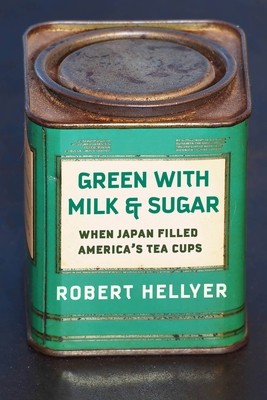
- We will send in 10–14 business days.
- Author: Robert Hellyer
- Publisher: Columbia University Press
- ISBN-10: 0231199104
- ISBN-13: 9780231199100
- Format: 15.4 x 23 x 2.8 cm, hardcover
- Language: English
- SAVE -10% with code: EXTRA
Reviews
Description
Today, Americans are some of the world's biggest consumers of black teas; in Japan, green tea, especially sencha, is preferred. These national partialities, Robert Hellyer reveals, are deeply entwined. Tracing the trans-Pacific tea trade from the eighteenth century onward, Green with Milk and Sugar shows how interconnections between Japan and the United States have influenced the daily habits of people in both countries.
Hellyer explores the forgotten American penchant for Japanese green tea and how it shaped Japanese tastes. In the nineteenth century, Americans favored green teas, which were imported from China until Japan developed an export industry centered on the United States. The influx of Japanese imports democratized green tea: Americans of all classes, particularly Midwesterners, made it their daily beverage--which they drank hot, often with milk and sugar. In the 1920s, socioeconomic trends and racial prejudices pushed Americans toward black teas from Ceylon and India. Facing a glut, Japanese merchants aggressively marketed sencha on their home and imperial markets, transforming it into an icon of Japanese culture. Featuring lively stories of the people involved in the tea trade--including samurai turned tea farmers and Hellyer's own ancestors--Green with Milk and Sugar offers not only a social and commodity history of tea in the United States and Japan but also new insights into how national customs have profound if often hidden international dimensions.EXTRA 10 % discount with code: EXTRA
The promotion ends in 19d.23:03:37
The discount code is valid when purchasing from 10 €. Discounts do not stack.
- Author: Robert Hellyer
- Publisher: Columbia University Press
- ISBN-10: 0231199104
- ISBN-13: 9780231199100
- Format: 15.4 x 23 x 2.8 cm, hardcover
- Language: English English
Today, Americans are some of the world's biggest consumers of black teas; in Japan, green tea, especially sencha, is preferred. These national partialities, Robert Hellyer reveals, are deeply entwined. Tracing the trans-Pacific tea trade from the eighteenth century onward, Green with Milk and Sugar shows how interconnections between Japan and the United States have influenced the daily habits of people in both countries.
Hellyer explores the forgotten American penchant for Japanese green tea and how it shaped Japanese tastes. In the nineteenth century, Americans favored green teas, which were imported from China until Japan developed an export industry centered on the United States. The influx of Japanese imports democratized green tea: Americans of all classes, particularly Midwesterners, made it their daily beverage--which they drank hot, often with milk and sugar. In the 1920s, socioeconomic trends and racial prejudices pushed Americans toward black teas from Ceylon and India. Facing a glut, Japanese merchants aggressively marketed sencha on their home and imperial markets, transforming it into an icon of Japanese culture. Featuring lively stories of the people involved in the tea trade--including samurai turned tea farmers and Hellyer's own ancestors--Green with Milk and Sugar offers not only a social and commodity history of tea in the United States and Japan but also new insights into how national customs have profound if often hidden international dimensions.

Reviews